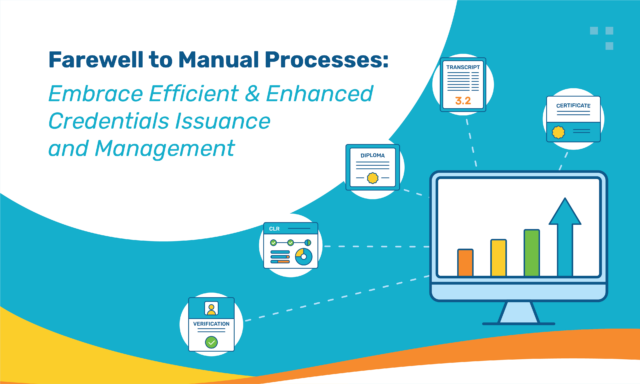College enrollment has been hit by major social and economic happenings and admissions trends that colleges and universities must help students navigate in order to improve enrollment. Parchment can help you reach best-fit prospective students. Keep reading to learn about how to increase college enrollment this year.
How the decline in college enrollment is affecting higher ed institutions
If your college’s enrollment has declined over the last few years, you’re not alone. According to reporting by NPR, college enrollment is down by one million students since the beginning of the coronavirus pandemic. What’s going on in America? Why aren’t high school graduates enrolling in college? Let’s take a look at some of the reasons for the decline in enrollment in colleges and universities across the nation and how this reduced enrollment rate is affecting higher ed institutions.
Sheltering in place wasn’t kind to colleges across the country. When school reopened, however, enrollment did not bounce back — it declined. Only 2% of the 2020 high school graduating class enrolled a year later in fall 2021, slightly less than 2.2% in 2019, according to The National Student Clearinghouse Research Center’s (NSCRC) high school benchmarks report. What are the factors affecting college enrollment?
The 2021 High School Benchmarks report found income level correlates with college enrollment after graduation for recent graduating classes of 2020 and 2021 in the following ways:
- 65% of high school graduates from schools with higher-income families enrolled in college for the fall after graduation.
- Only 45% of high school graduates from schools with low-income families* made enrollment a priority immediately after graduation.
- 64% of graduates from high schools with a small minority population** immediately enrolled for the fall after graduating.
- 52% of graduates from high schools with a large minority population enrolled for the fall after graduating.
- Out-of-state enrollment: 15% of high school graduates from schools with higher-income families had out-of-state enrollment while 5% of their peers from schools with lower-income families enrolled in out-of-state institutions.
- 65% of higher-income high school graduates enrolled in college for the fall after graduation.
- Low-income high schools only saw 45% enrollment immediately after graduation.
- Low-minority high schools had an immediate enrollment of 64%.
- 52% of high schools with a higher rate of minority students enrolled for the fall after graduating.
- Out-of-state enrollment: 15% of higher-income high schools had out-of-state enrollment and only 5% of lower-income students.
*Low-income schools are defined as schools where at least 50 percent of the students are eligible for a free or reduced-price lunch. High School Benchmarks, December 1, 2021.
**High-minority schools are defined as schools where at least 40 percent of the students are African American or Hispanic. High School Benchmarks, December 1, 2021.
It could be argued that students with the means are able to find a way to pay for college and those with fewer resources are more likely to enter the labor force immediately after graduation, earning higher wages and not incurring debt. There is evidence to support that a strong economy is a large factor in lower college enrollment rates. In fact, community college enrollment is down 13.9% since 2019, compared to the 1.7% dip in private four-year institution enrollment levels.
So then, why has college enrollment been falling in recent years? A college education is still an important factor in career development and earnings potential. In 2020, the median weekly earnings with a bachelor’s degree was $1,305 or 67% higher than that of a high-school graduate. Additionally, unemployment rates are much higher (9%) for high-school graduates than college grads (5.5%) two years ago. What has changed?
The following are thought to be main drivers of the precipitous fall in college enrollment in the last two years:
- The open-close-reopen state of higher education institutions across the country is turning high-school graduates off from college.
- A tight labor market with higher-paying, entry-level positions and benefits is a viable alternative.
- Uneven recovery after the pandemic downturn has made access to higher education harder for students from low-income, high-minority high schools.
- The so-called “birth dearth” or the falling birth rates since 2008 have resulted in a drop-off in first-time college enrollment.
- Public universities and community colleges are receiving less of their state’s budget than before 2008. A reduction in public funding for public education can result in fewer high-school graduates who qualify for financial aid getting the assistance they need. It can also result in better-resourced students going elsewhere as competition for those students is higher than it’s ever been.
It’s tough to say how larger economic and social factors may play a role in the college enrollment levels in the future. Today, higher-education institutions are looking for new ways to stay competitive and attract the best-fit students. And it’s often up to the admissions department to come up with better ways to reach students where they are and make it easier to search for colleges.
Parchment’s leading college admissions software solution can help your admissions department improve its marketing and find better-fit students with an approach that meets young people where they are. Avoid outdated enrollment strategies and start increasing your college’s or university’s enrollment today.




